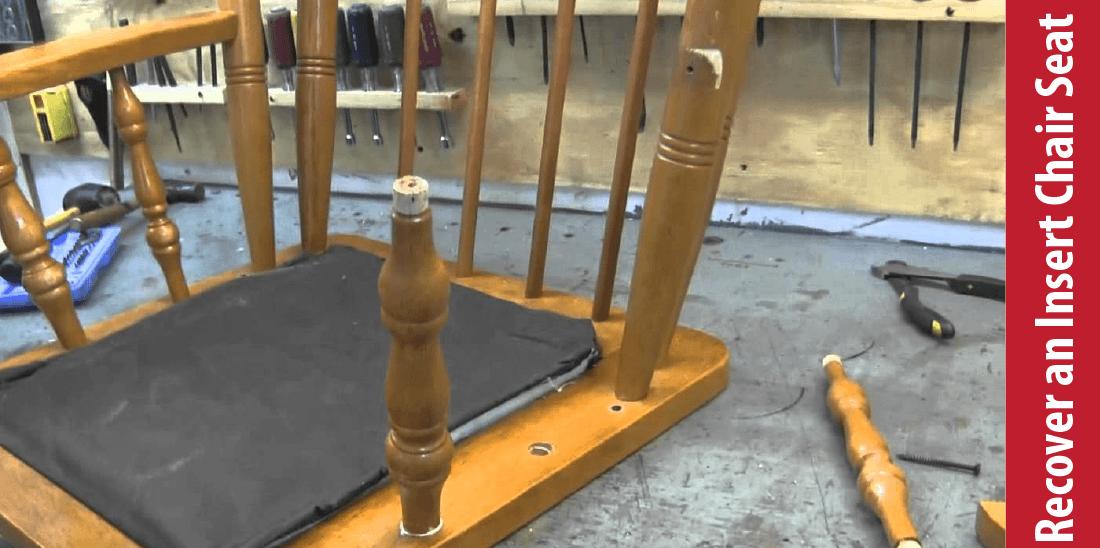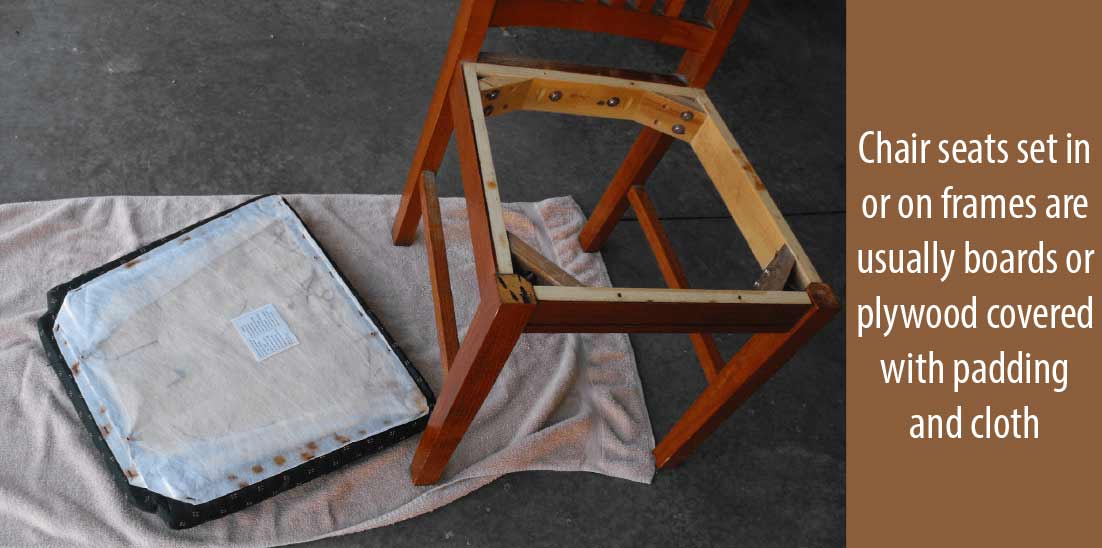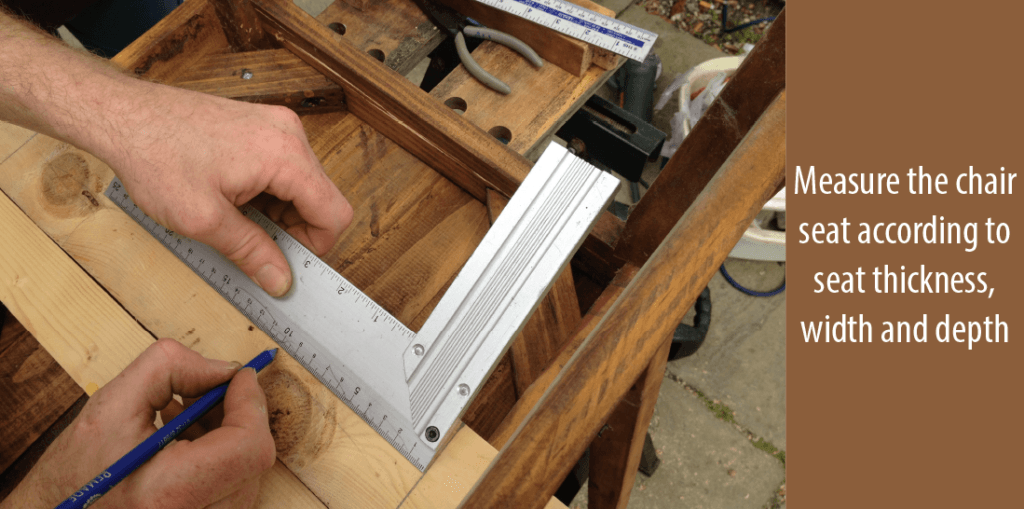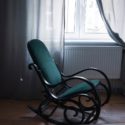Special Guide On How To Fix A Wooden Chair Seat
Contents
Chair seats are normally plywood or boards covered with clothes or padding. The seats may seldom split if you like to restore the seat with a section of plywood.
Three to eight-inch thickness is the best. If this size does not fit well, you need one by four-inch plywood but anything less than this would not give more support. You may use old chair seat as a pattern or template to cut out the new one.

Padded chairs seats are added with the casing with screws led into glue blocks. See the screws carefully; the cloth may conceal them. Alter all fasteners and trade in the same procedure to add a screw to the new chair’s seat.
If upholstery of seat is damaged, you can replace it easily. In the dining room chair, you see padded with the cotton batting.
Though some chairs hold foam padding or the combination of cotton and foam. Each type of padding is accessible pre cut for the chair seats. Padding for each chair may be 3/4 inch to one inch thick.
What To Do First
To repair or recover introduce chair seat, take out the seat from the chair. The seats are normal pieces of ply wood, added with the chair by screws.
The screws add the seat with the frame or will go up by the bend glue blocks. After that, remove staples or tacks that hold the upholstery fabric with the seat and lift of the fabrics. Refinish chair, if need and go ahead to do other things.
Remove the old fabric and use the new fabric. If the old padding of the chair is in perfect shape, you may use it again.

Remove the damaged one and use a new one. You can use level old cotton padding, it is well flattened, a stage of foam pad to make the seat pillow up to three by four to one inch.
Make the new fabric flat; center the padded seat, wrong side up and upside down. Fold the edges of fabric up on the seat; stretch it firmly onto the plywood.
You can use masking tape to warp the fabrics well. Begins from one side and fold the fabric under and add it to the seat by a staple gun.
If the new fabric is heavy enough, flathead upholstery tack can be more secured. Set staples one to one and a half inch apart side of the seat.
If the primary side is attached, again re-stretch the fabric then tack the other side. Turn over the seat and flat the padding. The fabric is directly, and there are no wrinkles.
Turn over the seat again and fasten the other sides. Wrinkle the fabric with the miter it freshly, if need tack or staple each layer individually.
Lastly, scrap the novel fabric with the seat, for repairs in future. Again place the chair’s seat with the frame, and then rescue it. Change all screws and make it tight again firmly.
How To Fix A Wooden Chair Seat

Normally chairs take many cases of abuse, and they need to repair now and then. The same things happen with the feet and legs of the heavy furniture. Below are some simple steps on how to fix a wooden chair seat.
Step 1 – Disassembling The Seat
Take out all screws that you see in the chair and create a mental note of the screws which may be missing the slots.
When the button conceals the screws, take out the button using the pliers to see the screws below. Wrap it with the masking tape to escape damage of the wood.
Step 2 – Removing Nails
If nails are used to the repair of the split chair seat, use angle pliers to take them out. To get more leverage, use a wood stir stick and save the wood from dents or scratches. Old glue remains with the frame may be chiseled off.
Step 3 – Joining The Split
Similar the wooden pieces but remember on the gaps may be found among them. Rough edges may be evened out by the help of joiner but do not remove the material.
Use wood glue to the corners and adjust them with bar clamps. Keep it for the whole night to dry it completely and then reassemble.
Another Way At A Glance
Remove all old seats from the chair by altering the back of the chair from the back section of the chair seat. The slats are adjusted with the drilled holes and with the glue.
Use glue solvent to remove the back of the seat along the nadir of every slat to loosen the glue for the every drilled hole.

Wiggle the back of the chair and press slat of its slot from the back of the chair. Turn the chair over and set it down on the seat and do the same thing by using the glue around the top of the chair to lose its leg from the drilled slots and wiggle the leg of the frame.
Measure the chair seat according to the thickness of the seats, its depth, and width. After that, create a tracing of the seat’s shape for making to cut a replacement simple and use its measurement to get a replacement piece.
Chair Seat Repair Materials
Before learning how to fix a wooden chair seat, you need to prepare the following materials:
- Wood paint stir stick
- Regular pliers
- Bar clamps
- Joiner angled pliers
- Wood chisel
- Masking tape
- Clean cloth
- Wood glue
Tips
- The chair has spread glue with each one prior you fasten the seat, manifold cracks.
- It is very simple to repair the chair after using the glue as the seat together, and it remains in a stable state.
Warning
Be authenticate because there is no glue at all. When it dries on a seat, you may have to sand it off. Meaning that refinishing the seats and if possible the whole chair.
Chair Repair Tools
1. Hammers / Mallets
- For furniture restoration, the hammer is a not a super idea. In general, there are 3 types which are very useful.
- Standard claw hammers – You have to notice the claw before you take the decision to buy it. It must have fine inside edges which slide beneath the head of the nail easily. The curve of the claw is enough to give good leverage. Claw hammers are different regarding weights, begins from 7 ounces. The perfect sizes are 13 to 16 ounces.
- Rubber mallet – The rubber mallet is a supertype of the tool. It helps you to pound on furniture parts except marring or denting them. It is nice for using in knocking furniture for tapping newly joints closely together.
- Wooden mallet – A wooden mallet is not the true necessity. It is very useful when you chisel to wood. Tapping the chisel with having a wooden head saves tear and wear on the chisel handle.
- Magnetic tack hammer – The other hammer you like to use is the magnetic tack hammer. It is a very thin-nosed light hammer that has a magnetic head. It is very good for reupholstery work. When you drive it, the magnetic head catches the tack upright. For this reason, you can tack it with only one hand.
2. Screwdrivers
Large screws are used to make this furniture, notably in braces and corner blocks on tables and chairs.
Therefore you have to choose the biggest bladed screwdrivers from the good collections.
3. Nailsets
Since you like furniture restoration, you need to conceal all traces of them. It is completed by countersinking the nailhead. After that, fill the gap with wood putty.
You can use a nail set to tap the nail a 16 inch or more under the wood surface. Also, you can use nailsets frequently to remove metal pins to rejoin dowel joints of some furniture.
4. Handsaws
The best handsaw to accomplish this job is a little backsaw. This is a square-ended saw having fine teeth. A backsaw is possible to use a little miter box to create angular cuts.
5. Wood Chisels
There are many ways to use wood chisels for furniture work. You may cut recesses for the installation of hardware and hinges.
Besides, make mortise-and-tenon joints or dovetails with them. Keep different types of chisels for your kit.
The best width is 1/4-, 1/2-, and 3/4-inch. These chisels can resist any temptation to apply the chisels for cutting wood. Also, you can destroy the fine cutting edges.
6. Clamps
Clamps are the most important tools for the furniture restorer. Make it a basic rule from the start to clamp each glue job.
It does not matter though it is big or small. Instead, you are able to make successful glue joint every time.
You will get 4 basic types of clamps in your hardware stores. If you like to have much restoring, you can use different sizes.
7. Others Essentials Tools
- Rules
- Dowel jig
- Carpenter’s level
- Pliers
- Planes





